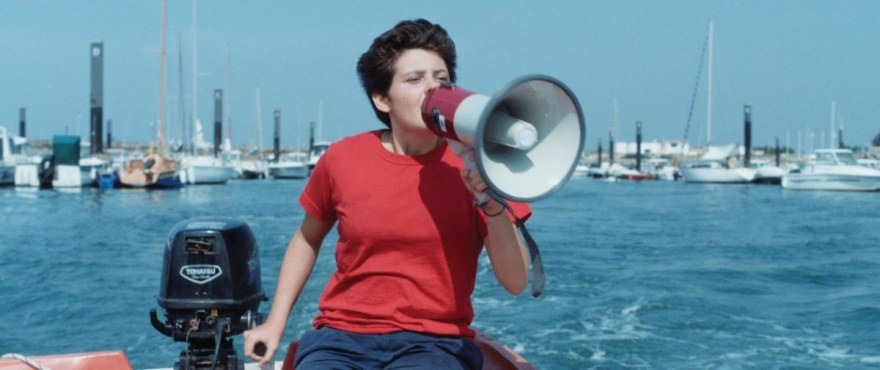Night cap with Côté coeur
Interview with Héloïse Pelloquet, director of Côté cœur [Love Life]
Do you have a particular affinity for the world of ports and fishing?
I really like filming fishing ports. Through their geography, size and infrastructure they tell a lot about the city – or island – around them. They are often divided into two spaces, one for pleasure and one for sea workers; as such, they are open to both tourism and concentrated on the ancestral tradition of fishing. I quite like the contrast and what it says about our costal cities. And they open on to the ocean, which I’ll never tire of filming.
How interested are you in the topic of the first budding of love? Do you have other film projects on the subject?
Whether or not it’s the first feeling of love, romantic desire does in fact often motivate my characters and spur their choices. I’m moved watching them act from a desire for the other, from the thirst to be desired. I’m currently writing a film that is not a story about desire and that I think of as a true adventure – both romantic and passionate.
How did you come up with the character Maryline? How did you work with the actress?
The character Maryline was written for the actress Imane Laurence, who I’d already worked with several times before. We both worked before shooting to find a character, her look, her way of moving, her way of expressing herself and being with others. On set I don’t ask actors to learn the script by heart, just to be familiar with the plot, the essence of the scene. I need for them to improvise and use their own words. Their way of speaking is one of the main reasons I chose them to begin with. For this film, I had complete confidence in the pair Imane Laurence – Jonathan Couzinié. They’re two really surprising actors. I thought great things could happen between them if I didn’t lock them in too tight.
Do you like horoscopes and do you read yours regularly?
I do not read my horoscope, but I find all forms of superstition fascinating because they add an element of fiction, and therefore of poetry, to daily life. Unfortunately for me, I’m categorically rational.
How did you work out the light’s journey that marks the passing of the day?
The film plays out over the course of a day, from morning until the following dawn. As night falls, the characters change and reveal a darker side of their personality. There’s also the planet in the sky that expands throughout the day and that seems to have an influence on their behavior. The dawn at the end is conceived as a cooling down, a form of liberation.
Have you discovered any advantages that the short film form provides?
I don’t think so, no, not particularly.
Côté cœur is part of National Competition F1.








